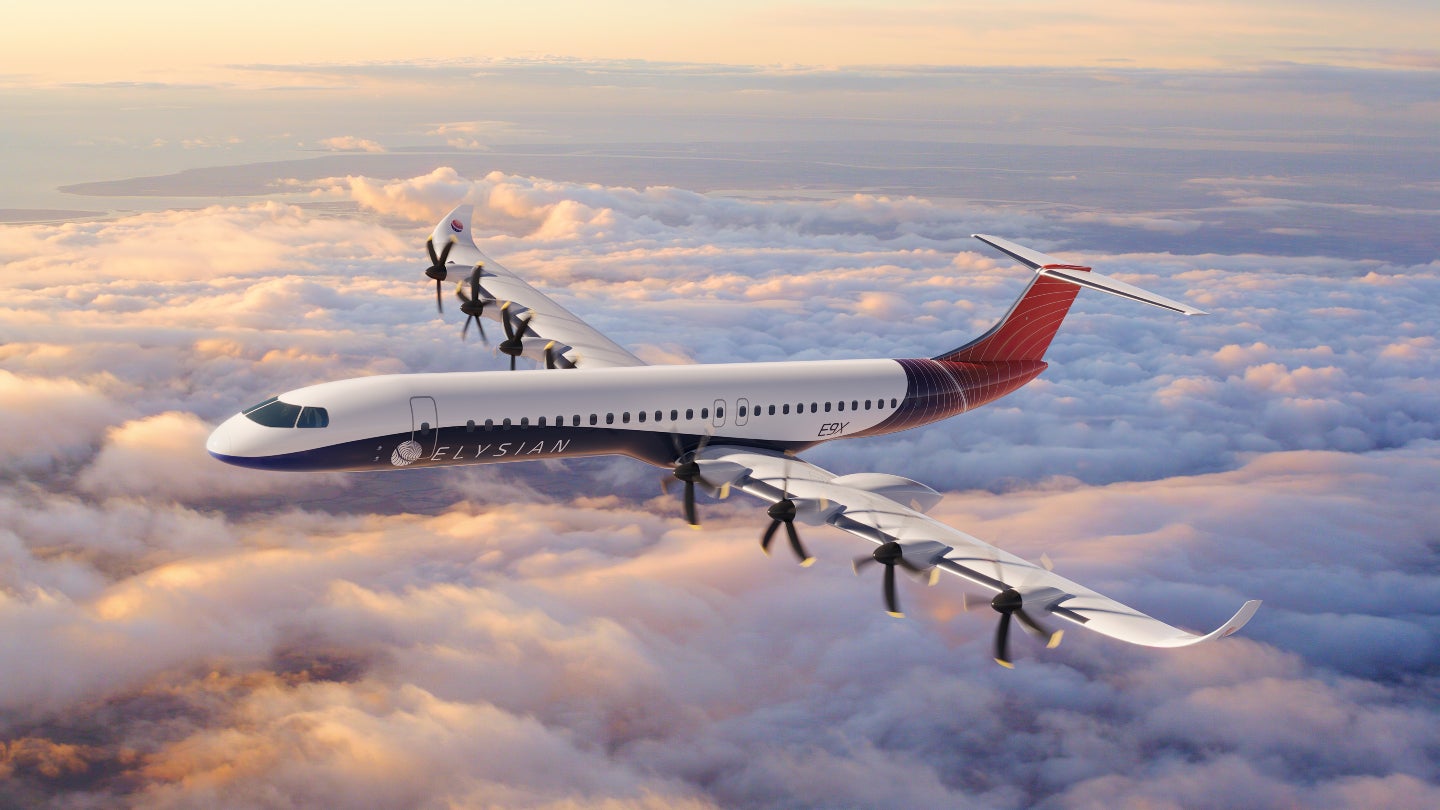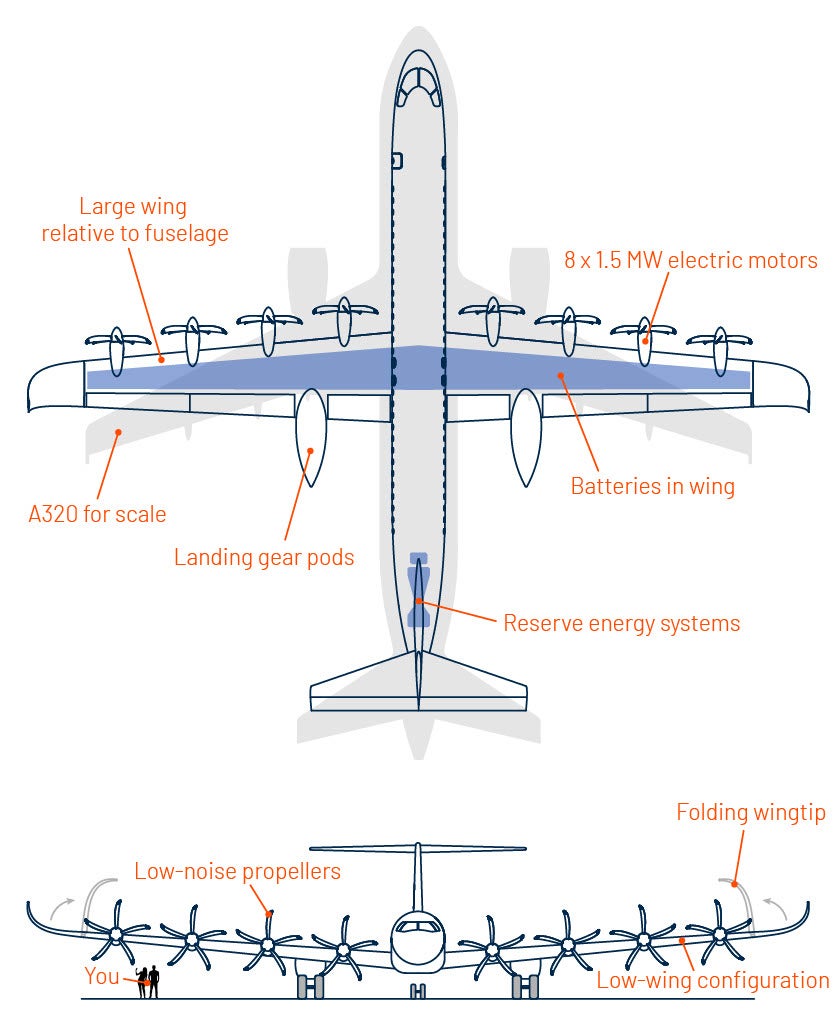
Dutch aviation start-up Elysian has revealed its design for one of the largest battery-electric aircraft in the industry, capable of carrying 90 passengers over 500 miles.
The E9X aircraft, developed in collaboration with the Delft University of Technology, marks a new step in the desire for a sustainable solution for the future of the aviation industry by providing a case for larger battery-electric aircraft which have often not been thought of as a viable option for larger commercial flights.
Rob Wolleswinkel, co-founder and CEO of Elysian, said: “Contrary to common belief, large battery-electric aircraft can carry much more energy and are aerodynamically more efficient than originally assumed.
“Instead of a turboprop aircraft, we considered first-generation narrow-body jets as a reference point. While these jets were fuel-inefficient, they were designed for long ranges and carried a high energy mass relative to the total aircraft mass.”
Elysian’s design for the aircraft is based on research for two scientific papers, “A new perspective on battery-electric aviation, part I and II”, by Wolleswinkel and co-authors Maurics Hoogreef, Roelof Vos, and Reynard de Vries, who also serves as the company’s co-founder and director of design and engineering.
The next-generation aircraft places the batteries in the wing to “put the load where the lift is” and address the weight issue, which has been seen as one of the main sticking points against creating larger battery-electric aircraft.

US Tariffs are shifting - will you react or anticipate?
Don’t let policy changes catch you off guard. Stay proactive with real-time data and expert analysis.
By GlobalDataAdditionally, the E9X is designed with larger wings, with foldable wingtips, and a smaller body to increase aerodynamic efficiency, a gas-turbine based reserve energy system to power batteries and motors during diversion or loitering, and a reduced propeller diameter to enable a low-wing configuration and wing-mounted landing gear.

The design proposals could spark renewed interest in the use of battery-electric aircraft, which have largely been ignored by larger airlines in favour of investment into low-emission options such as the use of sustainable aviation fuel (SAF) and hydrogen.
While options like SAF have seen significant investment, with Virgin Atlantic and Gulfstream Aerospace recently conducting the first 100% SAF flights across the Atlantic, the fuel does not provide an emissions-free form of travel and is still expected to be years away from being ready for widespread use.
Some, like Boeing CEO Dave Calhoun, have said the fuel will never be as affordable as traditional jet fuel, though it is currently uncertain how much an aircraft like the E9X would cost to manufacture and maintain.
Along with outlining an exact design for the 90-passenger E9X, the papers also argue the designs could create battery-electric aircraft for 40-120 passengers that are capable of flying up to 1000km, a range encompassing 50% of all scheduled flights worldwide.
However, despite the positive steps shown by Elysian’s announcement, the company itself admits there are “several technical challenges” that would need to be addressed to achieve its goal of creating an operational version of the aircraft by 2033, including battery cell development, thermal management, and high voltage power transmission.



